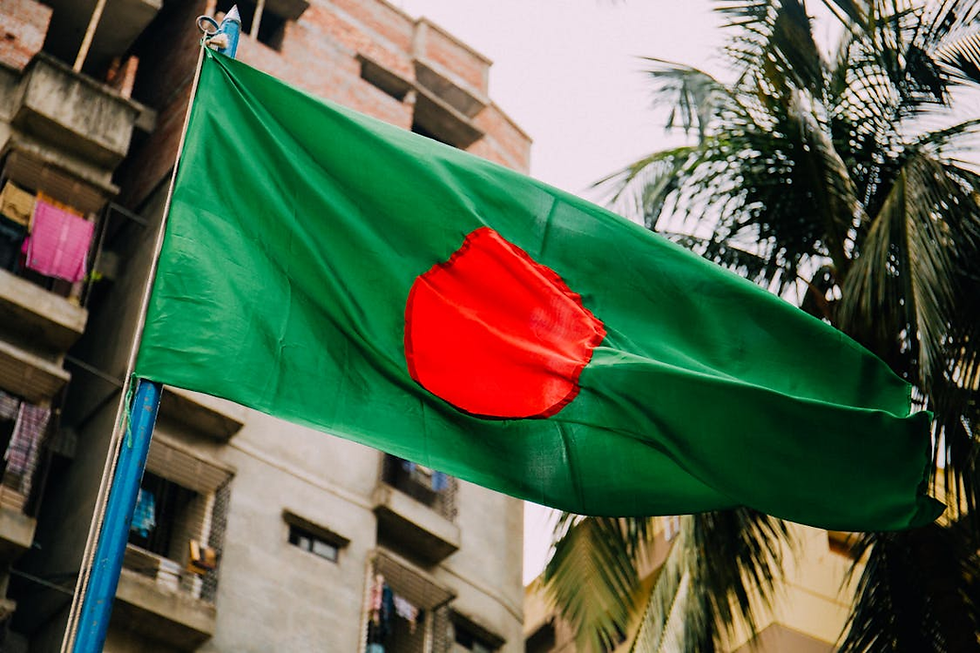China’s Plans for a “Super” Dam Reawakens Tensions With India
- Michael Zhang
- Aug 9, 2021
- 4 min read
Updated: Dec 23, 2024
China’s new proposal to build the Medog Dam, set to be the largest dam built on record, will cause significant geopolitical implications if followed through. The Medog Dam would be built on the Yarlung Tsangpo, the highest river in the world, at 5000m above sea level. With an average elevation of 4000m, the river runs through Tibet, India, and Bangladesh and empties into the Indian Ocean.
Due to the geographical difficulty of building in the Yarlung Tsangpo, this project has been considered the riskiest mega-project ever. Despite being hypothetical, India, which will be downstream from the dam, has already started voicing its concerns.
A specific geographical bend, known as the Great Bend of the Yarlung Tsangpo, is considered to be the location of the proposed dam. Its sharp turns, which initially confused explorers into believing in the existence of another river, and its steep drop of nearly 3000m creates huge potential for mass electricity generation. Its resulting canyon is not only more than 500 kilometres long, but also the deepest in the world, with a depth of more than 5,300 metres. That’s almost three times as deep as the Grand Canyon in the US.
Chinese proposals have narrowed the options for the potential structure of the dam into three possible options. The first option is to create a run-of-the-river dam, which does not involve a reservoir, but instead harnesses the flow of the water to generate electricity. A clear benefit to this proposal is that it is the cheapest option, and, given the difficulty of the terrain, would incur the smallest loss if the operation fails. Also, despite not using a reservoir, experts still estimate that its electricity generation should easily surpass that of the Three Gorges Dam, which uses a reservoir system. However, one major criticism is the lack of control over the amount of electricity produced, and is a strong argument for not going ahead with this idea.
Secondly, experts have proposed a reservoir dam, more closely emulating the design of the Three Gorges - China’s current largest dam - which would eliminate the control issue with the run-of-the-river dam while also producing more electricity. However, the Great Bend sits on the India-Eurasian tectonic plate, which makes it liable to earthquakes and subsequently induced landslides. One of the biggest earthquakes in recorded history was merely 200 kilometers from the proposed site. Following through with this proposal is a financial risk, due to the increased chance of natural disasters in the area.
Another proposed option is to create a 16-kilometer tunnel straight through a nearby mountain, called the Motuo Hydropower Station, bypassing the Great Bend, which could reportedly require boring an enormous water diversion tunnel through Namcha Barwa.
This would be arguably less efficient in terms of gathering energy, but the dam would be protected from earthquakes and landslides - making it a potentially more cost-effective proposition in the long term. The idea would be to send water plummeting through the tunnel and into turbines on the other side of the bend below, generating a large amount of energy. However, a lot of additional infrastructure would be required to accompany the dam, which would also need to be earthquake resistant.
Despite concerns with each of the proposed blueprints, Chinese officials are still pushing ahead with plans to construct this dam. Experts estimate that it will have a maximum capacity of 60 gigawatts, and will produce 300 billion kilowatts of clean renewable energy annually. Though a potentially optimistic estimate, it is calculated that. even running at just 50% capacity, it would be the largest dam in the world. Experts also estimate that this dam could produce three times the hydroelectric power of the Three Gorges Dam.
India’s government believes that China will use the dam to undermine India's water supply, as they use the Yarlung Tsangpo for agriculture. In response, India is building another smaller dam downstream. They are worried that China will use its reservoir to release excessive amounts of water that will cause floods in the Arunachal Pradesh and Assam region. If India builds a reservoir dam, it can release excess water during the dry season and less water during the wet season, thus countering China’s attempt to influence India’s water security.
India believes that, if they build the dam, they can claim the Yarlung Tsangpo under international law through prior appropriation. This would effectively force China to yield control of the river to India if India builds the dam or any other infrastructure harnessing its power first. China says that the Medog Dam is important in nearing its goals of carbon neutrality by 2060, as well as creating jobs in China’s poorest province.

In a statement in December, Hua Chunying, a spokesperson for the Chinese Foreign Ministry said: “China will continue to maintain communication with India and Bangladesh through existing channels. There is no need for the outside world to over-interpret it.”
China has only harvested 0.3% of the Yarlung Tsangpo river. After the bend in Indian territory, the Yarlung Tsangpo will empty into Bengal with 185 billion litre discharge and peak flow of 60,00 m/s. The annual discharge before reaching India is 31 billion and peak flow is at 6000 m/s.
India’s claims do have empirical evidence, however. Already, China has built dams along other areas of the Yarlung Tsangpo, causing disruption to river banks and fish life in areas downstream. With many communities near the Yarlung Tsangpo relying on the river as a main source of income, experts caution at the large-scale unintentional consequences of an even larger dam.
An expert at the Stimson Center noted, “Rivers are known to be hungry, [...] So you take that sediment out and that hungry river starts looking for new stuff, and it’s gonna pull it off of the banks and cause the deltas to erode. It’s a natural process caused by something unnatural.”
Himanshu Thakkar, a water expert from the South Asia Network on Dams, Rivers, and People, is among many that believe that the Medog Dam is something of a reverie: “This is the world’s most riskiest project. It’s technically the most difficult to build, ever, and it’s the most expensive project ever undertaken on any river anywhere in the world. So in that context, I have always seen announcements like this with a bit of scepticism.”

_edited.png)



Comments